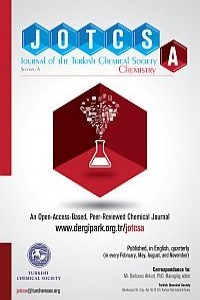Phytochemical Investigation of Rumex Abyssinicus Root Barks and In Vitro Evaluation of Its Antibacterial Activities
Different parts of Rumex abyssinicus have been used as a traditional medicine by local community in Ethiopia. Root and root barks of this plant are used traditionally by people of Ilu Ababor (Ethiopia) to lower blood pressure, heal wound and treat stomach ache. This paper presents the isolation and characterization of compound from the root barks of Rumex abyssinicus and evaluation of its antibacterial activity. The powdered plant material was sequentially extracted using n-hexane, chloroform, acetone and methanol. The crude extracts and the isolated compound (RA-3) were evaluated against four bacterial strains: Staphylococcus aureus, Escherichia coli, Pseudomonas aeruginosa and Salmonella thyphimurium as a potential antibacterial agent. Both the acetone and methanol crude extracts showed promising inhibitory effects against all the tested bacterial strains. The strongest inhibitory activity was observed for acetone extract against Staphylococcus aureus (21 mm) as compared to the standard Gentamicin (25 mm). The isolated compound showed inhibitory effect only on Staphylococcus aureus and Pseudomonas aeruginosa. The acetone extract was subjected to column chromatographic separation and resulted in the isolation of one pure compound (RA-3). The structure of this compound was characterized with the help of spectroscopic methods (IR and NMR). The isolated compound was characterized as Emodin based on spectroscopic data and in comparison with literature reports.
Keywords:
Rumex abyssinicus, Phytochemicals, Emodin Anthraquinone,
___
- 1. Borris, R.P. Natural products research: perspectives from a major pharmaceutical Company. J. of Ethnopharm. 1996; 51, 29-38. https://doi.org/10.1016/0378-8741(95)01347-4
- 2. Teklehymanot, T. Ethnobotanical study of knowledge and medicinal plant use by the people in Dek Island in Ethiopian. J. of Ethnopharm.124, 69-78. 2009; DOI: 10.1016/j.jep.2009.04.005
- 3. Mekonnen, T, Urga, K, Engidawork, E. Evaluation of the diuretic and analgesic activities of the rhizomes of Rumex abyssinicus J. in mice. Journal of Ethnopharmacololgy 2010; 127, 433-439. DOI: 10.1016/j.jep.2009.10.020
- 4. Teklehaymanot T, Giday M, Medhin G, Mekonnen Y. Knowledge and use of medicinal plants by people around Debre Libanos monastery in Ethiopia. J Ethnopharmacol. 2007;111:271–283. doi: 10.1016/j.jep.2006.11.019.
- 5. Mulisa E, Asres K, Engidawork E. Evaluation of wound healing and anti-inflammatory activity of the rhizomes of Rumex abyssinicus J. (Polygonaceae) in mice. BMC Complement Altern Med. 2015;15:341. doi: 10.1186/s12906-015-0878-y
- 6. Vasas A, Orbán-gyapai O, Hohmann J. The Genus Rumex: Review of traditional uses, phytochemistry and pharmacology. J Ethnopharmacol 2015; 175:198–228. https://doi.org/10.1016/j.jep.2015.09.001
- 7. Shifa M, Abdissa D, Asere TG. Chemical Constituents of Rumex abyssinicus Roots and Evaluation of Its Antimicrobial Activities. JOTCSA. 2021; 8(1): 21-46. DOI: https://doi.org/ 10.18596/jotcsa. 797560.
- 8. Getie, M, Gebre-Mariam, T, Rietz, R, Hohne, C, Huschaka, C, Schmditke, M, Abate A, Neubert, R. Evaluation of the antimicrobial and anti-inflammatory activities of the medicinal plants Dodonea viscosa, Rumex nervosus, and Rumex abyssinicus. Fitototerapia 2003; 74, 139-143. doi: 10.1016/s0367-326x(02)00315-5.
- 9. Muganga, R, Angenot, L, Tits, M, Frédérich, M. Antiplasmodial and cytotoxic activities of Rwandan medicinal plants used in the treatment of malaria. Journal of Ethnopharmacology 2010; 128 (1), 52-57. DOI: 10.1016/j.jep.2009.12.023
- 10. Rao KNV, Sunitha C, Banji D, Sandhya S, Mahesh V. A study on the nutraceuticals from the genus Rumex. Hygeia Hygeia JD Med. 2011; 3(1):76–88. http://www.hygeiajournal.com/downloads/81268250013.pdf
- 11. Fufa FM, Padmanabhan R, Gurmessa GT. Phytochemical Investigation and In Vitro antibacterial Evaluation on Root Extracts of Rumex abyssinicus. Nat Prod Chem Res 2016; 4: 239. doi:10.4172/2329-6836.1000239.
- 12. Sulaiman, S. F., Yusoff, N. A. M., Eldeen, I. M., Seow, E. M., Sajak, A. A. B., and Supriatno, K. L. “Correlation between total phenolic and mineral contents with antioxidant activity of eight Malaysian bananas (Musa sp),” Journal of Food Composition and Analysis, 2011; 24(1), 1–10. DOI: 10.1016/j.jfca.2010.04.005
- 13. Priya, K, Ganjewala, D. Antibacterial Activities and Phytochemical Analysis of Different Plant Parts of Nyctanthes arbor-tristis L. Research Journal of Phytochemistry 2007; 1, 61-67. DOI: 10.3923/rjphyto.2007.61.67
- 14. Nascimento, G. F, Locatelli, J, Freitas, P.C, Silva, G.L. Antibacterial activity of plant extract and phytochemicals on antibiotic resistant bacteria. Braz. Journal Microbiol. 2000; 31, 247-256. https://doi.org/10.1590/S1517-83822000000400003
- 15. Meselhy, R.M. Constituents from Moghat, the Roots of Glossostemon bruguieri (Desf.). Molecules, 2003; 8, 614-621. https://doi.org/10.3390/80800614
- 16. Evans, W.C. Treas and evans pharmacognosy, 14th edn. London, UK: W.B. Saunders Company. 1996; ISBN: 0702018996 9780702018992
- 17. Bruneton, J. Pharmacognosy, phytochemistry, medicinal plants, 2nd edn. Paris, France: Intercept Ltd and Lavoisier Publishing. 1999; ISBN-13: 978-1898298632
- 18. Paneitz, A. and Westendorf, J. Anthranoid contents of rhubarb (Rheum undulatum L.) and other Rheum species and their toxicological relevance. Europ. Food Res. Technol., 1999; 210:97-101. DOI: 10.1007/S002170050542
- Başlangıç: 2014
- Yayıncı: Türkiye Kimya Derneği
Sayıdaki Diğer Makaleler
Nevin TAŞALTIN, Elif TÜZÜN, Selcan KARAKUŞ
Rabia Zeynep KOBAK, Barbaros AKKURT
Amınu MUSA, Maryam IBRAHİM IFO, Ahmed SALİSU
Deni Ainur ROKHİM, Kafita Krisnatul ISLAMİYAH, Eli Hendrik SANJAYA
Nevin TAŞALTIN, Selcan KARAKUŞ, Barbaros AKKURT
Most. Nilufa YEASMİN, Munira SULTANA, Ayesha SİDDİKA, Samia TABASSUM, Saeed MAHMUD ULLAH, Muhammad Shahriar BASHAR
Kübra BAYRAK, Erol KAM, Zeki YÜMÜN, Melike ÖNCE
Niaz MALGHANİ, Sarfaraz MAHESAR, Jameel BAİG, Farah TALPUR, Syed Tufail Hussain SHERAZİ, Mirza JUNAİD
